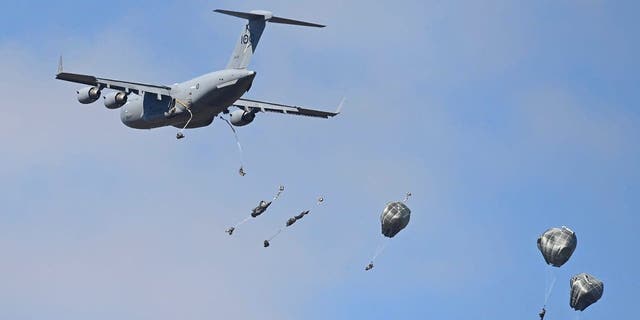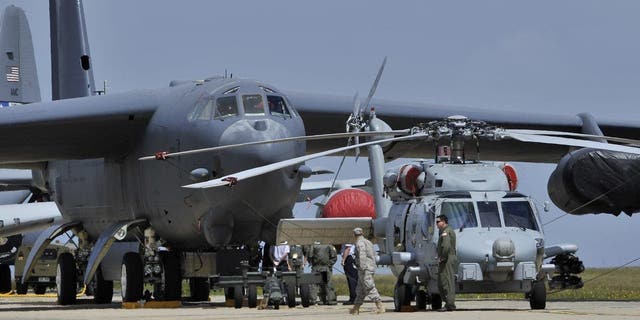US to send B-52 bombers to Australia in move China warns could ‘trigger’ arms race
China this week said U.S. plans to send B-52 bombers to Australia could “trigger an arms race” as the U.S. looks to beef up its regional security resources.
Royal Australian Air Force Base (RAAF) Tindal has long been home to U.S. B-52 bombers, but China’s foreign ministry took issue with U.S. plans to send up to six nuclear-capable B-52 bombers to the base in northern Australia, according to reports Monday.
Chinese Foreign Ministry spokesman Zhao Lijian said the U.S. plans to increase its security alliance with Sydney “escalates regional tensions” and “gravely undermines regional peace and stability.”
PENTAGON DEFENDS CUTTING NUCLEAR MISSILE PROGRAM IN NATIONAL DEFENSE STRATEGY AMID RUSSIAN TENSION
“China urges parties concerned to abandon the outdated Cold War zero-sum mentality and narrow geopolitical mindset and do more things that are good for regional peace and stability and mutual trust among all parties,” Lijian added.
But Defense Department spokesman Lt. Col. Martin Meiners said U.S. plans to send bombers and an array of aircraft to Australia for joint drills was common practice in the long-standing alliance and a “cornerstone of U.S. foreign and security policy.”
“Force posture cooperation with Australia has been a key feature of our alliance for decades,” he told Fox News. “A wide range of U.S. military aircraft, including B-52s and other bombers, have visited Australia to participate in joint exercises for years and will continue to do so.”
The announced decision to send B-52 bombers to its Aussie ally comes just one week after the U.S. listed China as its No. 1 security threat despite the war in Ukraine and active nuclear threats from Moscow.

NORTH KOREA WARNED OF ‘UNPARALLELED’ RESPONSE FROM US, JAPAN, SOUTH KOREA IF IT LAUNCHES A 7TH NUCLEAR TEST
Secretary of Defense Lloyd Austin described China as “the only competitor out there with both the intent to reshape the international order and, increasingly, the power to do so” moments after the National Defense Strategy (NDS) was declassified by the Department of Defense.
“The NDS bluntly describes Russia as an acute threat. And we chose the word ‘acute’ carefully,” Austin added. “Unlike China, Russia can’t systemically challenge the United States over the long term.”
U.S.-China relations have become increasingly strained over the last several years, particularly as Beijing continues its aggressive posture in the region.

Meiners said the U.S. has been committed to its partnership with not only Australia but other Western and regional allies in maintaining a security presence through “enhanced air cooperation through the rotational deployment of U.S. aircraft of all types.”
B-52 bombers can carry the largest array of weapons in U.S. inventory, including cluster bombs, gravity bombs and precision-guided missiles.
Read the full article Here


